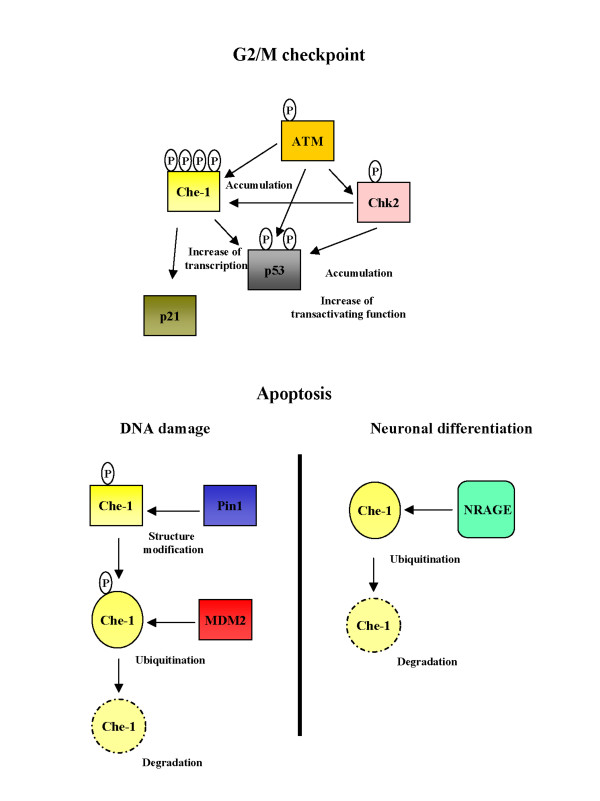Figure 1.
Model to explain Che-1 modulation. Non apoptotic genotoxic stresses induce Che-1 stabilization through its phosphorylation by ATM and Chk2. Stabilization of Che-1 produces an increase of p53 and p21 expression and contributes to arrest cell growth in response to DNA damage. Apoptotic DNA damage induces Che-1 Thr144 phosphorylation and Che-1/Pin1 interaction. Pin1 catalyzes Che-1 conformational changes, increasing Che-1/HDM2 interaction and in such way Che-1 degradation. In cortical neurons, NRAGE inhibits nuclear localization of Che-1, by sequestering it within the cytoplasmic compartment, and down-regulates endogenous Che-1 by targeting it for proteasome-dependent degradation.

